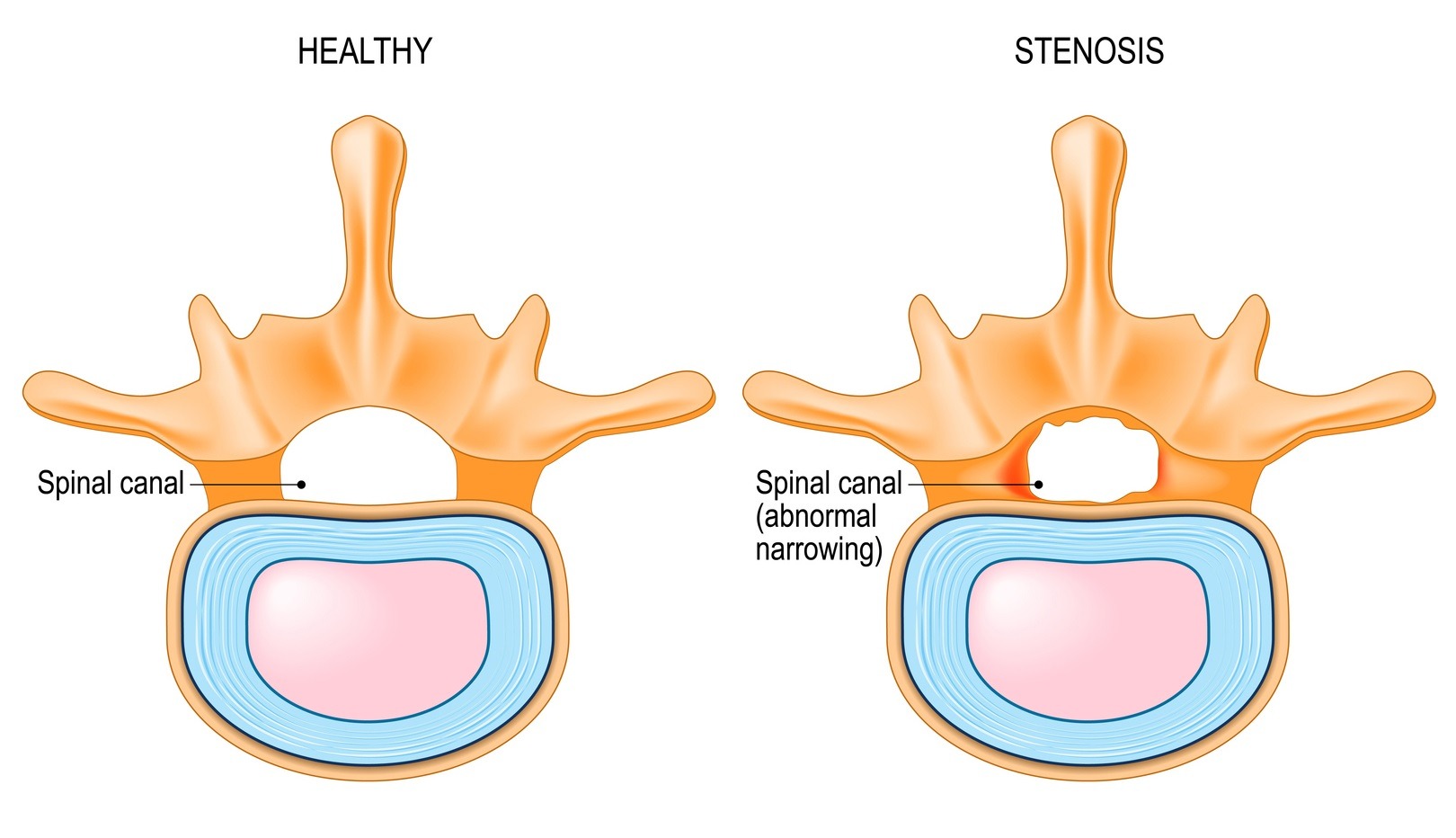
What is Spinal Stenosis?
Spinal stenosis is when your spinal canal, nerve root canal, or intervertebral foramen (the opening between vertebrae) becomes too narrow. With the narrowing of these passageways, there is not enough room for the nerves, which results in spinal nerve compression. The narrow passageway and nerve compression cause back pain and possibly sciatica. Spinal stenosis doesn’t develop overnight – it takes years and years to happen. Even if you are developing spinal stenosis, you might not have any symptoms for a long time. That’s why spinal stenosis is diagnosed mainly at a later age, when people are in their 50s and later.
Why do these Passages Become Narrow?
The narrowing of these passages may be due to any of the following phenomena:
1. The facet joints in the spine may increase in size due to osteoporosis or Paget’s disease, forming bone spurs, narrowing the passageways, and ultimately compressing the nerve roots.
2. Herniated or bulging discs are two of the most common problems for clinicians nowadays. Intervertebral discs are connective tissue pads that support the vertebral column and act as shock absorbers. Over time, the intervertebral discs in the vertebral column may face wear and tear and ultimately bulge out. The bulging disc might compress nerve roots or the spinal cord.
3. Ligamentum flavum is the ligament that attaches two vertebrae. In many cases, these ligaments increase in size with time, causing the narrowing of passageways causing spinal or nerve compression.
4. Many cancers like prostate cancer and cancers of the spinal cord itself result in the narrowing of the passageways in the vertebral column and cause spinal cord or nerve root compression.
5. Traumas and injuries also have a role in passageway compression. Acute minor injuries may create temporary swelling, but that subsides over time and doesn’t significantly contribute to spinal stenosis. Repeated injuries and fractures in the vertebral column are more serious, however.
Risk Factors
1. Aging: Advanced age is the most common factor for spinal stenosis. Arthritis, osteoporosis, and Paget’s disease become more severe with age. These diseases ultimately increase the risk of spinal stenosis.
2. Repetitive trauma: Repetitive spinal trauma poses a risk of spinal stenosis since it can cause chronic inflammation in the nerve passageways causing narrowing and nerve compression.
3. Tumors: Certain tumors metastasize in the spine. These tumors and the tumors of the spine itself are major risk factors for spinal stenosis.
4. Scoliosis and kyphosis: Scoliosis and kyphosis are congenital abnormalities in the vertebral column resulting in unusual curvatures in the vertebral column. Scoliosis and kyphosis can contribute to early onset spinal stenosis.
What are the Signs and Symptoms of Spinal Stenosis?
Spinal stenosis can manifest in either the neck or the lower back. In the neck, spinal stenosis occurs in the cervical vertebrae. If you have cervical stenosis, you might feel numbness, tingling sensations, and pain in your arms and hands.
If your lower back hurts, and the pain radiates to the buttocks and thighs, then lumbar and sacral spinal stenosis is likely to be the cause. In severe cases, there is urinary and bowel incontinence and difficulty walking.
How is it Treated?
Medical treatment
Your physician may prescribe painkillers and nerve stabilizers, and this is often enough treatment for people with mild to moderate symptoms. However, many people do not get sufficient relief from the symptoms by using medicines alone, and must seek additional treatment.
Surgical intervention
Your doctor may run some tests to diagnose the exact cause of spinal stenosis and determine whether surgery is appropriate or not. In surgery, the surgeon reduces pressure on the spinal nerves by clearing passageways and removing anything which is compressing the nerves.
Corrective exercises to build strength
Your physician might also refer you to a rehabilitation center or a physiotherapist if they think physical rehabilitation would be effective for you. Rehab’s objective is to build muscle strength and tolerance over time. The treating physician can also analyze if your posture is the aggravating factor for spinal stenosis. Corrective exercises and therapy sessions can be employed to correct your posture if it is worrisome.
Identification of aggravating factors
It is necessary to identify the causes of the spinal stenosis and any activities that aggravate the symptoms. Avoiding aggravating factors is one of the crucial steps in treating spinal stenosis.
Custom orthotics to improve alignment
If you have minor scoliosis or kyphosis, your doctor may use belts and orthotic equipment to correct your posture and vertebral alignment.
Lifestyle modification
Eating a well-balanced diet, losing some weight, and exercising regularly can significantly reduce the symptoms of spinal stenosis.
SRO Total Spine Health Center
Our orthopaedic specialists offer a wide range of spine injury treatment options providing individualized care using technical expertise such as innovative diagnostic testing, minimally invasive surgical techniques, and targeted therapies at our full-service onsite physical therapy center to improve mobility and quality of life. Dr. Christian Athanassious is the Medical Director of SRO’s Total Spine Health Program is a recognized leader in the field of both non-operative and operative care of spinal conditions, and our providers specialize in tailoring treatment plans to meet the unique needs of our patients. Learn More…

